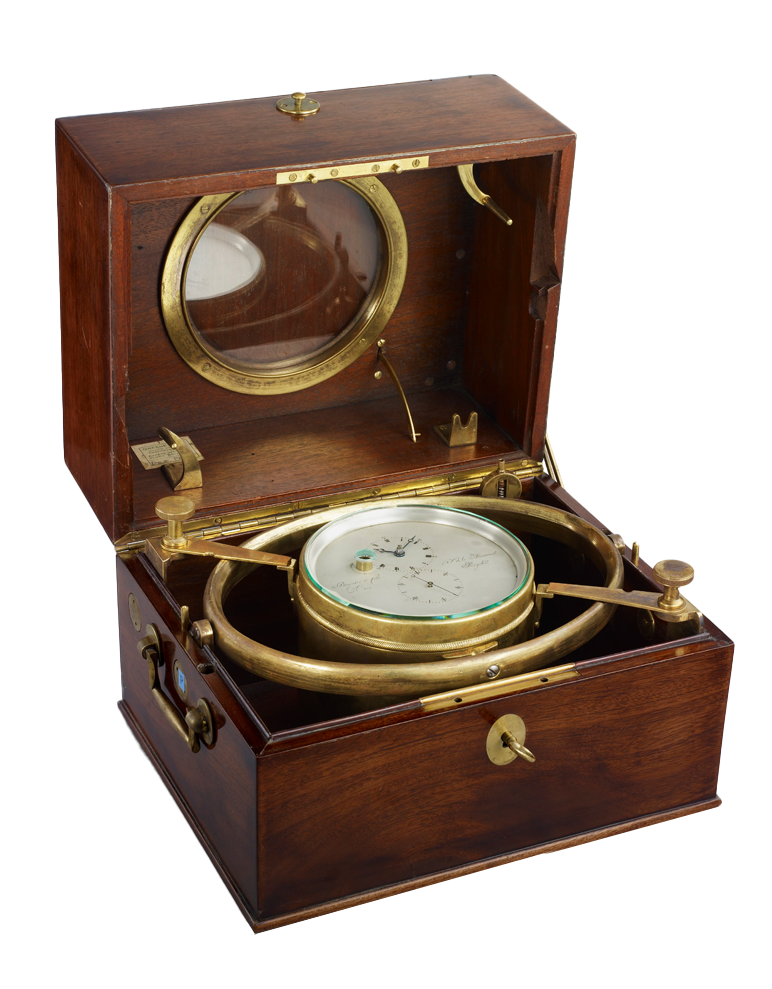Appointment of A.-L. Breguet as Watchmaker to the French Royal Navy
Appointment of A.-L. Breguet as Watchmaker to the French Royal Navy
After his appointment to the Bureau des Longitudes in Paris in 1814, A.-L. Breguet was given the official title of Watchmaker to the French Royal Navy by Louis XVIII. This was the most prestigious title a watchmaker could receive, since the very notion of marine watchmaking implied scientific knowledge.


In 1815, King Louis XVIII of France recognized the exceptional qualities of Abraham-Louis Breguet’s marine chronometers, appointing him Chronometer-maker to the French Royal Navy. From that point on, the success of the royal expeditions was in part dependent on the reliability of the Breguet naval clocks – both a great honor and a heavy responsibility.
The term chronomètres de marine covers all precision watches designed specifically for the requirements of the French navy, whether for war or for trade. Marine chronometers took the form of a movement of fairly large volume enclosed in a cylindrical brass casing. The casing was attached to a sturdy wooden box, usually of mahogany, by means of brass gimbals that served as a stabilizer and a shock absorber. Fitted with handles and a glass face, the marine chronometer was placed at the heart of the vessel, in the captain’s quarters, and was one of the ship’s most valuable instruments; among other functions, it was used to calculate longitude at sea. According to his own account, Breguet started to work on marine chronometers early in his career and was eager to improve their performance and to follow in the footsteps of his illustrious predecessors and contemporaries in Britain and France. However, he began to produce significant numbers of “naval watches” only after he had been appointed Chronometer-Maker to the Royal Navy in 1815. Equipped with either a single or twin barrel, these pieces generally had an easily removable detent escapement mounted so as to facilitate maintenance.
Breguet Marine Chronometer No. 4330 called a trial marine timepiece, send on 11 September 1827 to Mr Ferret, Breguet's agent in Le Havre, for Captain Gérard.